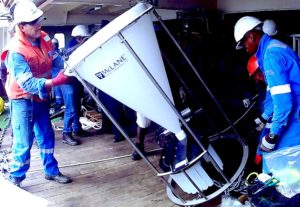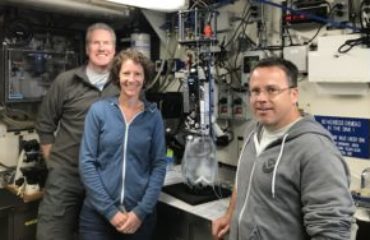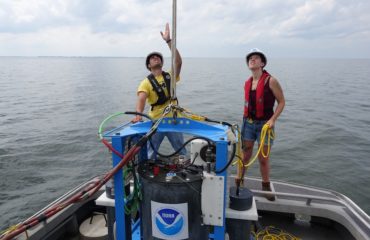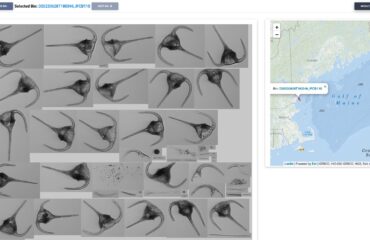
Photo: SOCarP Team
In order to understand the response of the Southern Ocean as a carbon sink and its response to changing global climate conditions, a long-term flux study called “Southern Ocean Carbon Processes-SOCarP” was conceived at the National Centre For Antarctic and Ocean Research (NCAOR), India, using moored sediment traps.
In early 2017, the SOCarP team left Port Luis, Mauritius, onboard SA Agulhas to initiate India’s first sediment trap based flux studies in Southern Ocean. McLane Sediment Traps were deployed on a sub-surface mooring within the Sub-Tropical Frontal waters of the Indian sector of the Southern Ocean. Over a 12 month period, the moored instruments will gather samples and data to study total carbon flux and the efficiency of the biological pump. Click to watch video of a SOCarP sub-surface mooring deployment. The mooring placement beings at 3:28 and the sediment trap appears at 5:09.
The Southern Ocean, especially the Indian Ocean sector, is a key site for major scientific investigations in biogeochemistry, atmospheric sciences, physical oceanography, geological and geophysical research. The area also has latitudinally separated zones with distinct physical and biological features. The energetic ocean conditions lead to deeper mixing of the distinct layers. Due to its unique properties, the Southern Ocean is a well-known as the sink of atmospheric carbon dioxide. Climate conditions at the study site produce a High-Nutrient Low Chlorophyll (HN-LC) regime due to lack of bioavailability of iron to support primary production. Such regimes are known to have a complex food-web structure including highly active microbial loop that complements the low iron paradigm.
The SOCarP team was led by Principal Investigator/Project Leader Dr. P.V Bhaskar and included NCAOR’s many researchers, technical, engineering and crew specialists. Visit the NCAOR website for more detailed information about NCAOR’s Southern Ocean Research initiatives.



